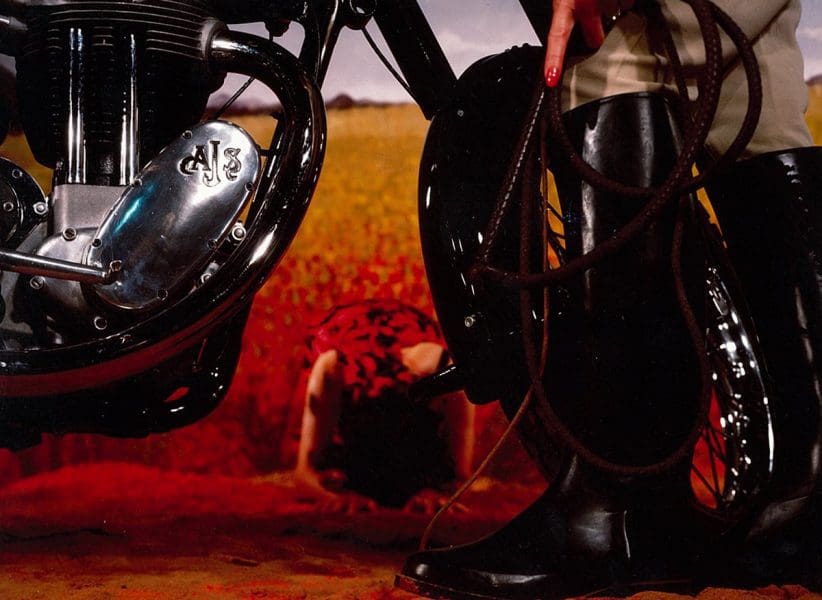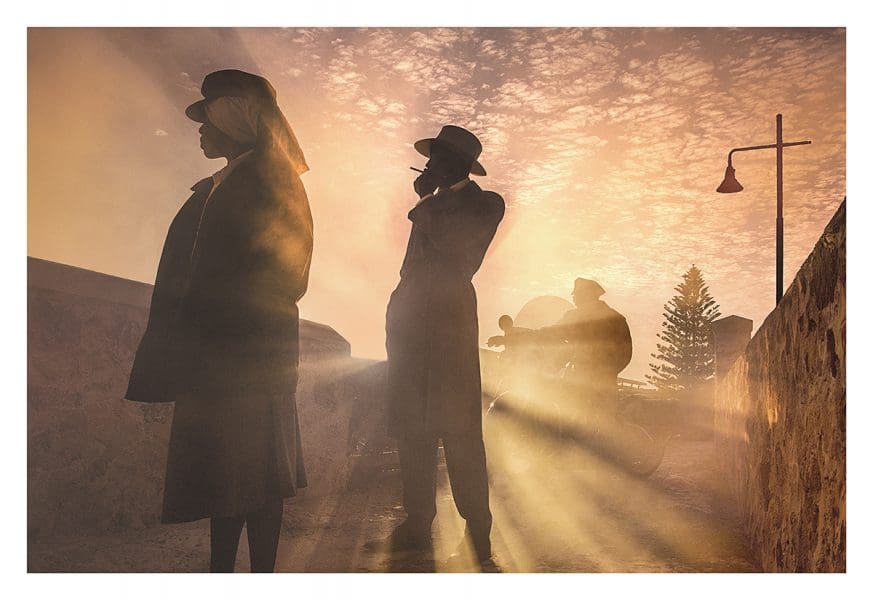
Finding New Spaces Together
‘Vádye Eshgh (The Valley of Love)’ is a collaboration between Second Generation Collective and Abdul-Rahman Abdullah weaving through themes of beauty, diversity and the rebuilding of identity.


Artificial backdrops and perplexing cultural references remain powerfully enigmatic in Tracey Moffatt’s hallowed 1989 series Something More. No surprise the much-loved series of photographs, with their pronounced film-still ambience, are getting a fresh showing ahead of this artist’s coming outing at the 2017 Venice Biennale.
Something More, held in the Murray Art Museum Albury collection, will be shown with other key works from later series Laudanum, Some Lads and Scarred for Life at the Bega Valley Regional Gallery from 19 May. Though it’s not quite a stopover to Venice, this show is certainly a fabulous excuse to make the trip.
As for Moffatt’s big Venice show, curator Natalie King says she has been immensely privileged to be comrade and confidante during the development of Moffatt’s new work, where she has “conjured images” from a room in an old cottage in Sydney bushland with a panoramic view of Middle Head. “My role is to be an accomplice to her vision and ideas,” King says.
“Tracey is feisty and fun with a fierce intellect and forensic memory,” King says. “She voraciously reads literature, poetry and consumes popular culture. She has an epic knowledge of the history of photography and cinema.” And while there is a lot of elaborate post-production, there is also much experimentation involved in making her photo-fictions, she says.
The new work – imaginative stories deeply founded in history – includes two new photographic series and two filmic videos under the overarching rubric My Horizon. “In all of these works, the poetic and personal meld as we are invited to look out and beyond, towards the unobtainable: what might be over the horizon,” King says.

King agrees that Moffatt’s work seems to have a profound effect on audiences. Ever since Something More and her first films Night Cries (1989) and bedevil (1990) launched her into the general public’s conscious- ness in Australia, her work has been much discussed. Night Cries was selected for official competition at the 1990 Cannes Film Festival, bedevil was also selected for Cannes in 1993, and in 1997 Moffatt was invited to exhibit in the Aperto section of the Venice Biennale. She will be the second artist, following Fiona Hall, to show in the new Australian Pavilion in the Venice Giardini.
“Tracey’s work is capacious and tantalising,” King says. “My Horizon can represent the far or distant future or the unobtainable. The horizon on the ocean has been described as a line where the sky kisses the sea. Tracey’s new work is poetic and personal, melodramatic and fantastical while reflecting on the way we live in precarious times of seismic upheaval. I think the difficulty in categorisation is reflected in her relentless experimentation with the medium of photography itself and her unique ability to take it into other realms and dimensions.”
King, noted for working with many significant artists for big shows locally and internationally, says that while Moffatt has continued to exhibit extensively in the international arena, including in 2016 at the Centre Pompidou (Paris), Seoul International New Media Festival and The Kitchen (New York), for the Venice Biennale it is essentially a new commission.
“Tracey takes her camera into unknown locations to create photodramas with models, actors and people found on the street. I hope viewers will be lured into her scenarios and audiences will find moments of deep connection”.
Along with the Venice Biennale show, Moffatt is also launching a new book, the first to be published on her in a decade. As editor, King has assembled a compendium of authors and included literature to reflect Moffatt’s photo-fictions. Published by Thames & Hudson, it begins with a moving poem by Aboriginal academic and activist Romaine Moreton and finishes with a novella by Miles Franklin Award winner Alexis Wright. Other contributors include Germano Celant, who curated Moffatt into the 1997 Venice Biennale Aperto section – he is currently attached to Fondazione Prada and Fondazione Aldo Rossi, Milan, and was project director of Christo’s The Floating Piers at Lake Iseo, Italy. Australian Spain-based film critic Adrian Martin has also written for the new book, tackling one of Moffatt’s new filmic videos.
King says she is also thrilled to be reproducing a special essay on Moffatt written by the equally legendary Camille Paglia, originally published in Penthouse in 1992. Moffatt, though, remains the star of all this: enigmatic, talented and powerful in her own right.
My Horizon
The Australian Pavilion, Giardini
57th International Art Exhibition
La Biennale di Venezia
13 May – 26 November
Tracey Moffat
Bega Valley Regional Gallery
19 May – 8 July